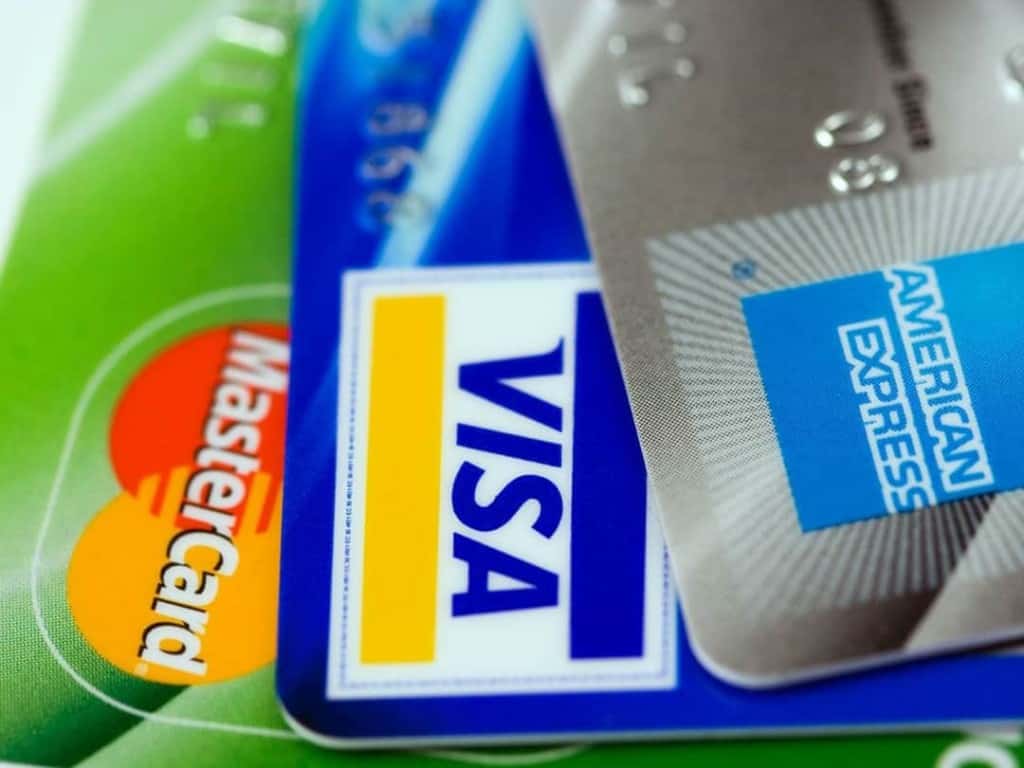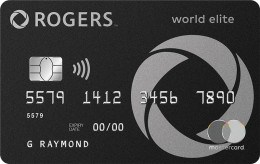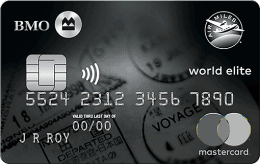Photo by Bruce Mars on Pexels
About this article
- This article will teach you the basics of credit card rewards.
- The info is general and can help you wherever you live (so long as you can access credit card rewards).
- This is not a sponsored post and there are no referral links. Rest assured that it’s purely for your information only. 🙂
- For those who are wondering which cards I recommend, check out What’s in This Canadian FI-Seeker’s Wallet? In it, I’ll reveal and review my favourite credit cards.
A simple approach to credit card rewards
As part of the FI community, you’ve undoubtedly heard of card churning and travel hacking. These lucrative strategies are very tempting, but they can require a lot of time, effort, and planning.
I don’t know about you, but my life’s full enough at the moment! For now, I’m keeping things simple—so hardcore card hacking is off the table.
But there are still plenty of rewards for non-hackers! We’re still able to access a lot of the benefits with just a bit of effort. For example, my husband and I earn a minimum of $1,000* in annual rewards—with very little time spent.
I can increase my efforts when I’m up for it, or scale back to basics when life’s too crazy. Either way, I know I’m still earning plenty of rewards. It’s a simple, flexible approach.
*We earn approximately $800 in cashback and $500 in travel rewards each year.
My ‘middle-of-the-road’ approach to credit card rewards
While I care about and try to optimize our rewards, I don’t maximize things at all times. I call this my ‘middle-of-the-road’ approach to credit card rewards.
There are two main components to this approach:
1. Keep a few long-term, everyday cards
These are the cards we keep in our wallets year after year. Their rewards and benefits are so good that it just makes sense for us to use them everyday. Set them up once, then you’re done!
2. Add short-term cards as desired (optional)
These cards offer amazing sign-up bonuses, but aren’t great for daily use. The regular earn rates tend to be pretty low and the annual fees quite high. BUT, the sign-up bonuses are so huge, it’s worth the hassle to sign up for them.
I use these cards to quickly rack up bonus points, then cancel them before the annual fee is due. Then I repeat this as time and energy permit. That’s it! It’s easy, simple, and totally customizable.
Why this works
This approach is the best of both worlds: we always earn a good cashback rate with our long-term cards; then when I feel like building our travel miles, I apply for short-term cards to get the sign-up bonuses.
It’s a simple, low-maintenance way to earn generous rewards with little time and hassle.
I’ll show you how I do it!
Keep reading, and I’ll tell you how I handle our credit card rewards—one easy step at a time.
Disclaimers
For your financial safety
Card hacking is only suitable for responsible credit card users. That means you pay your balance in full every month, only spend on what you can afford and actually need, and have a good credit rating.
Do your own due diligence
As with all things financial, never blindly accept anyone’s recommendations. When applying for credit cards, take the time to do your own calculations and research. It’s the only way to know if you’re actually getting the best value from your credit card rewards.
Step 1: Choose your rewards

There are two main types of credit card rewards: cashback or travel. My suggestion for beginners is to start with cashback, then add travel rewards as you get more experienced.
Let’s take a look at each type of reward:
Cashback rewards
Cashback rewards come in the form of cash or points (with an assigned cash value). The reward is typically credited to you as a cheque, electronic fund transfer, or statement credit.
- They’re flexible and easy to use.
- Their value is simple and easy to understand.
- For the same amount of spending, cashback rewards typically aren’t as high-value as travel rewards.
- 0.5% (poor)
- 1% (standard)
- 1.25% – 2% (good)
- 4%+ on select categories (excellent)
- Premium cashback cards offer higher earn rates, often making their annual fee more than worth it.
- Most free cashback cards will only earn you 1.25% at the most.
- There are some free cashback cards with higher earn rates for transactions over a certain threshold.
- In Canada, one free card (the Rogers World Elite Mastercard*) earns you 1.75% on everything! (*This is not a referral link.)
Travel rewards
With travel rewards, you earn points that can be redeemed for travel.
I won’t lie: travel rewards can be complicated! If you’re interested in travel rewards, you should first get thoroughly acquainted with your travel rewards program(s) of choice.
Learn more at FI School Lesson 12: Travel Hacking before applying for travel rewards cards.
- For the same amount of spending, you’ll typically get more value from travel rewards than cashback.
- If you’re clever with your redemptions, you can get unbelievable value from travel points—as high as 8%+ on your spending.
- Travel points are trickier and slower to capitalize on than cashback.
- Each travel rewards program has its own rules and stipulations (which could make the points far less valuable than anticipated).
- With so many travel rewards programs available, it can be difficult to save enough points in any one program to be useful.
- No-fee travel rewards cards tend to offer relatively poor earn rates, in the 0.5% range.
- Premium travel rewards cards, such as the Amex Platinum offer good earn rates (1%+). But their annual fees tend to be higher compared to premium cashback cards.
- Clever travel hackers can earn upwards of 8% on their travel rewards credit cards.
- It can be difficult to calculate the exact earn rate on travel cards because you have to also factor in the redemption rate. This can have a huge effect on how much bang for your spending buck you’re getting.
- Travel rewards cards are great as short-term cards because they offer big sign-up bonuses. (And the first year’s annual fee waived is often waived.)
- They can also work as long-term cards if you have a specific points program you want to save up for. (But you should do the math to ensure you’re getting better value for these points than with a cashback card.)
Step 2: Categorize your spending

Categorizing your spending is the next step before applying for rewards cards. Why is this necessary? It’s because different cards offer different levels of rewards for different categories. For example: 4% on groceries and 1% on everything else.
When you know how much you spend in each category, you can select the best cards to maximize the rewards you earn.
Here are the main credit card spending categories:
- Gas
- Groceries
- Travel
- Restaurants
- Recurring bills
- General
Sort your annual expenses into these categories. Add them all up, then divide by twelve to get the average monthly amount. If you use a budgeting program like Mint, YNAB, or Quicken, this will take you no time at all.
If you don’t use these programs, grab a few credit card or bank account statements. Skim through to get a general feel for how much you spend in each category. While this is less accurate, it’ll get you close enough.
Step 3: Look for cards and offers

Take your categorized monthly spending numbers and use online tools such as those listed below. They’ll help you calculate your potential rewards and find the best cards to suit your spending:
Canada
Outside Canada and the US
I tried to find tools for other countries, but didn’t have much luck. If you know of other good rewards calculators, please share in the comments below, and I’ll be happy to add them.
If you can’t use a calculator, you can still work out the rewards manually:
- Use credit card review sites to get familiar with the cards and bonus offers available to you.
- Figure out which cards offer rewards that best match your spending patterns/needs.
- Manually calculate the rewards you’d earn for each category of spending, then add it all up.
- Don’t forget to factor in annual fees and other benefits such as insurance, status upgrades, travel credits, etc.
Step 4: Application tips

When you’ve decided on the card(s) you’ll apply for, read through these tips before clicking that Apply Now button:
- Be aware that applying for new credit cards means your credit score will take a small, temporary hit. This is normal, and nothing to worry about. After a few months, your score will go back to normal.
- If you’re planning to apply for a loan (e.g. mortgage, HELOC or personal loan) I’d avoid applying for credit cards in the 4-6 months prior. You’ll want your credit score to be as high as possible for the best rate on these large loans.
- For cards with minimum income requirements, you can choose to either enter your individual earnings or household earnings (for a couple). I’m pretty sure it always makes more sense to enter household earnings—higher income gives you access to more cards.
- If you’re close to reaching FI, apply for cards with a high income requirement before you stop earning income! This is because credit card companies base income requirements on annual income, not on net worth. (Pretty ironic for FI-seekers who often have a low annual income by choice, but are actually wealthy!)
- If you don’t qualify based on income requirements, you may have another option: try asking the credit card company to base the application on your annual spending instead.
- Some people have also suggested fudging your income numbers. They claim that credit card companies don’t check your tax returns, so they can’t really know your true income. I’d consider doing this if I was a few thousand short, but I’d feel uneasy about claiming $100,000 of income if we only earned $50,000. Use your own discretion!
Step 5: Stay organized

When applying for credit cards, stay organized to minimize headaches and ensure you receive the rewards and rebates you’re entitled to. Here’s what I do with every credit card application:
1. Save screen caps/PDFs of offer pages
Once a credit card offer ends, it may be impossible to find the details again. I’d suggest saving copies of this info for your own reference. Here are the details you should capture:
- Bonus offer details.
- Bonus offer requirements.
- Bonus offer deadline.
- Regular, after-bonus earn rate.
2. Save screen caps/PDFs of application confirmation pages
When applying for credit cards, always save a copy of the final confirmation page. This is important info to have on hand if your application is delayed. Here are the details you should capture:
- Application date.
- Confirmation number.
- Phone number for following up.
3. Set a reminder for the bonus offer deadline
In order to receive your sign-up bonus, you’ll generally have 30–90 days to meet spending requirements. Set a reminder to ensure you don’t miss this deadline!
4. Set a reminder to cancel before the annual fee is due
If you don’t intend to keep the card past the first year, be sure to cancel the card before the annual fee is due. Set a reminder so you don’t forget!
Step 6: Manage your long-term cards

The Rogers World Elite Mastercard—one of our favourite long-term cards
Long-term cards are the ones you keep year after year. Here are a few things you can do to ensure you’re getting the maximum benefit from these cards:
- Make the minimum spend to meet the requirements of the bonus offer. (For a list of ideas to easily hit your minimum spend, see Appendix B.)
- Continue using the card for everyday purchases.
- Every 1–3 years, do the math again to decide if this card is still meeting your needs.
- That’s it! Once your long-term cards are set up, they take almost no work to maintain.
Step 7: Manage your short-term cards

The American Express Marriott Bonvoy—one of our favourite short-term cards
Here’s how to ensure you’re getting the maximum benefit from your short-term cards (and don’t miss out on bonuses or get caught paying an annual fee):
- Make the minimum spend to meet the requirements of the bonus offer.
- If the rewards on regular spending are worthwhile, continue spending on the card until the next annual fee is due.
- When the annual fee is due, call to politely request an annual fee waiver. (I haven’t had any luck with this! However, lots of people do—so it’s worth a shot.)
- If the rewards on regular spending aren’t worthwhile, keep the card for at least 6 months, and cancel before the annual fee is due.
- Read the precautions below before cancelling your cards.
Precautions when cancelling credit cards
To ensure you don’t lose any of your rewards when cancelling your card, be sure all the rewards points are posted to your account before you cancel. If you close the card before all the points have been posted, there’s no way to reinstate them.
Here’s the process I recommend:
- Stop spending on the card two billing cycles before you intend to cancel the card.
- Let the rewards post to your account in the following cycle, then cancel the card before the end of the next cycle.
- If rewards are in the form of an annual statement credit, you’ll need to request a cheque after the final billing cycle. (This may have to occur after the annual fee has already been charged. Not to worry—you should be able to call in to have the fee reversed.)
Step 8: Redeem your points

This is the fun part! But before you rush in, keep these tips in mind:
Cashback rewards and points
- Cashback is very simple—the points/credits/dollars are worth what they’re worth. Unlike travel rewards, you won’t be able to ‘hack’ the system and make cashback rewards any more valuable.
- Keep in mind: cashback points can be devalued if the credit card company decides to restructure the points. It’s wise to redeem/cash out for cashback as frequently as allowable.
Travel rewards points
- Do your research, and Google ‘value of (blank) points’ to get a feel for how much your points are worth. Figure out what the lowest, average, and highest redemptions are.
- The lowest-value redemptions are usually for cash or cash-like rewards. (For example: gift cards and statement credits). Low-value redemptions like these could mean your spending may have only earned you fractions of a percent in rewards. Avoid these redemptions at all costs!
- Aim for average-value redemptions at the very least. This shouldn’t be hard; average-value redemptions are typically easy to come by.
- The highest-value redemptions are usually for first-class flights and luxury hotels. Clever hackers do their research to figure out redemption ‘sweet spots’ and get enormous value for their points.
- Keep in mind that some rewards programs won’t allow you to use points to pay for taxes and fees. This can make a redemption very low value, so always do the math before booking with points!
Step 9 (optional): Apply for more short-term cards

The BMO Air Miles World Elite Mastercard—another of our favourite short-term cards
As you have the time and energy, repeat steps 1–8 with different cards. (Also: see the box below for info on ‘churning’ cards.)
This process does require time, energy, and organization, so it’s totally okay if it’s not for you! Just stick with your long-term everyday cards, and you’ll still earn plenty of rewards.
You could also take a break for a year or two, then get back to it when you’re feeling up to it.
A word about ‘churning’
Churning is the process of repeatedly applying for, using, then cancelling a specific credit card in order to receive the sign-up bonus multiple times.
While churning isn’t illegal, I feel it’s a bit unethical to push it too hard. (Hardcore churners will re-apply for a cancelled card within a couple of months.)
I’ve ‘churned’ a couple of times myself, but waited a year or two before reapplying. Do what you feel comfortable with.
Your mileage may vary with non-churnable cards
Amex cards are not supposed to be churnable (you can only receive a bonus offer once per lifetime). However, some people have been successful in churning these cards.
Likewise, one of my favourite cards—the BMO Air Miles World Elite Mastercard isn’t supposed to be churnable. But I still received the bonus with my second application two years later.
If you’re planning to churn, do your research! Red Flag Deals, Flyer Talk, and Reddit are excellent sources of info for churning.
And that’s it!
I hope you now have a good grasp of the basics of credit card rewards. Using a middle-of-the-road approach simplifies things but still allows you to earn a lot of rewards.
Feel free to comment with questions or to share your favourite credit card reward tips.
Appendix A
My favourite cards
This is a summarized list of my favourite cards (note that these are all Canadian credit cards). For more details, see my next post, What’s in This Canadian FI-Seeker’s Wallet?
My favourite long-term cards
- Rogers World Elite Mastercard
- PC World Elite Mastercard
- Canadian Tire Triangle World Elite Mastercard
My favourite short-term cards
- Marriott Bonvoy American Express
- American Express Gold Rewards
- American Express SimplyCash Preferred
- American Express AIR MILES Platinum
- BMO AIR MILES World Elite Mastercard
- TD Aeroplan Visa Infinite
- Alaska Airlines World Elite Mastercard
Appendix B
Ideas for hitting minimum spends
Below is a list of expenses to help you easily hit your minimum spends (without spending on things you don’t really need).
Large expenses
I try to time my card applications to coincide with large expenses like the following:
- Home or car insurance.
- Vacation expenses.
- Large purchases like appliances or home improvement supplies.
- Christmas gifts.
Small expenses
Sometimes I still need a few hundred dollars of expenses to meet my minimum spend. Here are some of my preferred ways to do that:
- Prepay bills (use Paytm to prepay utilities and property taxes with your Mastercard).
- Make some donations.
- Stock up on gift cards for businesses you frequent.
- Stock up on gift cards for gifts.
- Stock up on home, office, or pet supplies.
- Add a credit to your community centre account to use towards future classes.
Appendix C
Canadian credit card rewards articles
Canadian credit card rewards sites
These Canadian sites are dedicated to travel hacking/credit card rewards:
- Flytrippers
- Prince of Travel (this site is amazing—it’s both comprehensive and approachable.)
- Rewards Canada
Canadian credit card rewards forums
Take your credit card rewards to the next level with the forums listed below.
Be warned that these forums can be overwhelming and unfriendly to newbies! Educate yourself and take the time to search for an answer before posting a new question.
- Churning Canada Subreddit
- RedFlagDeals credit cards forum
- Flyertalk (there’s Canadian-specific info here, but you’ll have to dig around to find it)
Support this blog
If you liked this article and want more content like this, please support this blog by sharing it! Not only does it help spread the FIRE, but it lets me know what content you find most useful. (Which encourages me to write more of it!)
You can also support this blog by visiting my recommendations page and purchasing through the links. Note that not every link is an affiliate link—some are just favourite products and services that I want to share. 🙂
As always, however you show your support for this blog—THANK YOU!





13 Comments
GYM
June 10, 2019 at 9:53 amThanks for the mention! I’m totally middle of the road and non hard core. I wish I was more hardcore so I could fly in business class but something is better than nothing!
Chrissy
June 10, 2019 at 9:26 pmI too wish I had more time to be a hardcore travel hacker! It’d be especially helpful since I have kids who now need to pay adult fares on international flights! 😭
Abigail @ipickuppennies
June 10, 2019 at 10:46 amI’ve been out of the churning game for a year or two, but I’m dipping my toe back in. Just got the American Airlines card (60,000 miles, which is enough for a trip to Europe). After that, I’m going to get a hotel rewards card. I’m still comparing to decide which one is best for my purposes (London hotels that aren’t too far away from the places I’ll want to visit). Excited to get back in the game!
Chrissy
June 10, 2019 at 9:29 pmYou are so lucky to be able to access the amazing sign-up bonuses you get in the US. We Canadians can only look on in envy!
I love London, and hope to make it back there one day. It’s such an amazing city!
Sam
June 14, 2019 at 11:03 amChrissy, this has certainly given me some good ideas e.g. buying gift cards for businesses I use. At the moment I have a 0% interest card for 20 months. This is with Tesco who are a major supermarket chain as well as now having a bank. They give points for buying in their stores as well as elsewhere. I then get vouchers to get money off when I shop. You can also save the points and swap them for other types of rewards e.g. ferry crossings to France. I am making minimum payments and saving the money in a high interest savings account (well high in this day and age which isn’t great, but better than nothing). As you wisely advise I am keeping an eye on when this offer runs out so I don’t mistakenly end up paying interest. I need to do more research on this area. Thanks for the inspiration.
Chrissy
June 15, 2019 at 3:16 pmWow, 20 months with zero interest is pretty generous! What a clever idea to save the money in a HISA while you use the card. (We FIRE types are a different breed, aren’t we?)
Kris
June 26, 2019 at 2:16 amI just got into using all my credit cards in an efficient manner this year. I was all about just paying off every month but realized I have to take the next step and using the appropriate cards for certain categories in order to maximize your rewards. For me, all of my cards are cash back since I’m not a frequent traveler…yet. Hopefully, I get to travel more once both my sons are in grade school so we can take yearly trips. That is when I will really get into the credit card game and be more hardcore about it.
For now, cash back rewards is fine and I use one of the top credit cards in the US, the Chase Freedom where it’s 5% cash back for certain categories for a 2-3 month period. Currently, it is 5% for grocery stores and then next month the 5% will take into effect for gas stations for 3 months. You really have to keep track of it but it’s worth the time to get the best of your credit card spendings.
Chrissy
July 1, 2019 at 3:11 pmCashback is definitely the most flexible—you can always use cash! That’s why we use cashback cards for long-term use. They’re simple and easy to redeem.
That Chase Freedom card is so unique! I’ve never heard of a card with revolving rewards percentages like that!
Stacey
July 20, 2019 at 12:44 pmThank you for the informative article. I am wondering whether there is a particular travel rewards card available to Canadians that you would recommend for maximum value and ease of use?
Chrissy
July 21, 2019 at 12:12 amHi Stacey,
That’s a tough one to answer! It depends a lot on what you’d most like to earn points for (e.g. flights vs hotels). Then, it depends on which points program you’d like to take advantage of.
My advice is to start by thinking about a trip you’d like to take. Then decide which expense you’d like to pay for with points. Then you can decide which points program will give you the most bang for your buck.
(My personal favorite for flights is Aeroplan, and for hotels is Marriott Bonvoy.)
Once you decide on a points program, look for the cards that are affiliated with that program. Then do some math to decide which one will give you the most points for your spending.
(If I had to pick a good Aeroplan card, it would be the TD Aeroplan Visa Infinite. And for Marriott Bonvoy, it would be the Marriott Bonvoy American Express.)
I know that’s not the most straightforward answer, but I hope it helps you narrow things down!
Stacey
July 22, 2019 at 9:12 amThank you so much, Chrissy! We have three kids and hope to start taking a 4-week annual overseas trip together (ideally to a different continent each year or two). We are seasoned budget travelers but the main obstacle is flights. I think I will look into the TD Aeroplan Infinite. I really appreciate your advice.
Chrissy
July 22, 2019 at 9:00 pmI’m jealous that you can take 4-week trips! We get close to four weeks (25 days is our record) but my husband’s always uncomfortable about being away from work for that long. I don’t blame him—the work and emails pile up quickly while he’s away.
Flights are a huge expense (even more so for a family of five). Let me know how you do with your points collection!
Stacey
July 22, 2019 at 9:46 pmI will! Thanks, Chrissy!